Beginner Poker Guide | Best Poker Tips for New Texas Hold’em Players
Learn how to play poker with this complete beginner poker guide. Discover the best poker tips, common mistakes to avoid, Texas Hold’em rules, etiquette tips, position strategy, preflop and postflop advice, bluffing basics, bankroll management, poker terms and where to play poker online or in person.
Best Poker Tips for Beginners
| Jump to Each Section | |||
|---|---|---|---|
| Tips | Mistakes | Games | Hands |
| Rules | Etiquette | TAG | Bluff |
| Position | Bankroll | GTO | Flow |
| $ vs Tourney | Where to Play | Apps + Sites | Terms |
Alright, heads up, rookies. You’re walking into the poker gym now, not the chess club. This isn’t about memorizing fancy moves or trying to outsmart everyone with tricks. It’s about showing up sharp, making smart decisions, and not lighting your stack on fire before the flop.
Here are the poker tips every new player needs to tattoo on their brain:
- Slow your roll: If your hands are moving faster than your brain, you’re doing it wrong. Think before you act. Count to three if you have to.
- Fold is not a dirty word: You don’t get a trophy for playing every hand. Most hands are junk. Throw them away. Good players fold. A lot.
- Start at the kiddie pool: Low-stakes games are where you learn. If you screw up, it costs lunch money, not rent. Stay humble.
- Save the Hollywood moves: Bluffing looks cool in movies. In real life, most new players just bluff into a brick wall. Learn when it makes sense first.
- Eyes open, even when you fold: You’re not off-duty just because you folded. Watch what the others do. Who’s loose? Who’s tight? Take mental notes.
- Position is power: Being last to act is like having the answer key. Wait your turn, then use that information to hit harder.
You want to win chips? Great. Start by staying out of trouble. Be the guy who folds the garbage, bets the good stuff, and doesn’t try to be a hero every hand. That’s how smart players win in the long run.
Biggest Mistakes New Poker Players Make
| Jump to Each Section | |||
|---|---|---|---|
| Tips | Mistakes | Games | Hands |
| Rules | Etiquette | TAG | Bluff |
| Position | Bankroll | GTO | Flow |
| $ vs Tourney | Where to Play | Apps + Sites | Terms |
Playing Too Many Hands, Chasing Draws, and Ignoring Position
Poker is not a game that rewards wishful thinking. If you show up with sloppy habits, the table will chew you up fast. Most new players lose not because they get unlucky, but because they repeat the same avoidable mistakes hand after hand.
- Playing too many hands: If your first instinct is to see every flop, stop. Most hands are garbage. Fold them and wait for spots where you actually have an edge.
- Chasing every draw: Four to a flush? That’s not an automatic green light. Do the math. If the odds do not add up, let it go. Hope is not a strategy.
- Ignoring position: Where you sit at the table matters. Acting last gives you more control and information. Early position? Play tighter. Button? Open up a little.
- Calling too much: Calling is not neutral. It is passive. If you do not know why you are calling, you probably should not be in the hand at all.
- Playing stakes that are too high: Just because the table has chips flying does not mean you belong in that lineup. Start small. Move up when your results say you are ready.
- Letting tilt take over: Everyone gets unlucky. The best players recover quickly. Take a break, grab some water, reset. Do not compound one bad beat with ten bad decisions.
Fix a few of these and you are already better than half the table. The secret is not in some magic trick or solver-approved line. It is in cutting out the habits that drain your stack before the cards are even done falling.
Best Poker Games for Beginners to Start With
| Jump to Each Section | |||
|---|---|---|---|
| Tips | Mistakes | Games | Hands |
| Rules | Etiquette | TAG | Bluff |
| Position | Bankroll | GTO | Flow |
| $ vs Tourney | Where to Play | Apps + Sites | Terms |
Start with Low-Stakes Texas Hold’em Cash Games
Start with Texas Hold’em if you are new to poker. No gimmicks, no mixed formats. It’s the most popular game for a reason. You’ll always find a table, and almost every guide or video starts here.
Cash Games are Better than Tournaments
You can join or leave anytime at Cash Games. The blinds do not change, so you can learn without being forced into all-ins or rushed decisions. You get more chances to think and more hands per hour to improve.
Play the Smallest Stakes You Can Find
Online, start with $0.01/$0.02. Live, look for $1/$2 or a low-pressure home game. The goal is to get experience, not to chase big wins. Low stakes protect your bankroll while you learn.
Use Beginner Tables Online
Most poker sites offer starter pools or beginner zones that keep you away from the grinders. Take advantage of those. You will be surrounded by other new players trying to learn just like you.
Choose Low-Stakes Games When Playing Live
Do not drop into a casino table on day one. That’s varsity-level stuff. You want reps, not pressure. Ask around for a home game where the vibe is chill and people play fair. Or find a poker night at a local spot that’s beginner-friendly. If the table is full of sharks or no one’s talking, walk. You need a game where you can learn, ask questions, and actually enjoy yourself.
Stick to These Guidelines in the Beginning
Get your reps in first. Once you can spot good hands, make clear decisions, and handle a few tough spots without freezing up, then branch out. Try six-max, jump into a small tourney, or mix in deeper stacks. But early on, stick with low-stakes full-ring Hold’em. That’s your training ground. Build your instincts there before you test them anywhere else.
What Are the Hand Rankings in Poker?
| Jump to Each Section | |||
|---|---|---|---|
| Tips | Mistakes | Games | Hands |
| Rules | Etiquette | TAG | Bluff |
| Position | Bankroll | GTO | Flow |
| $ vs Tourney | Where to Play | Apps + Sites | Terms |
Before you play a single hand of poker, you need to know what beats what. Poker is a game of five-card hands, and the best hand at showdown wins the pot. Here’s a breakdown of all the hand rankings from highest to lowest.
Poker hands rank from high card up to royal flush
| Hand | Description |
|---|---|
| Royal Flush | A, K, Q, J, 10 of the same suit |
| Straight Flush | Five cards in a row, all same suit (e.g. 9-8-7-6-5 of hearts) |
| Four of a Kind | Four cards of the same rank (e.g. 7-7-7-7-K) |
| Full House | Three of a kind plus a pair (e.g. 9-9-9-4-4) |
| Flush | Five cards of the same suit, not in sequence |
| Straight | Five cards in sequence, mixed suits |
| Three of a Kind | Three cards of the same rank |
| Two Pair | Two different pairs |
| One Pair | Two cards of the same rank |
| High Card | None of the above. Highest card plays |
Memorize this ranking order cold. Many beginners lose pots simply because they misread what hand is strongest. For example, a straight beats three of a kind, and a flush beats a straight. Don’t let confusion cost you chips.
Print out a hand ranking chart, or keep one open when you’re learning online. Knowing these rankings by heart is one of the most important poker tips for beginners.
Texas Hold’em Rules for Beginners
| Jump to Each Section | |||
|---|---|---|---|
| Tips | Mistakes | Games | Hands |
| Rules | Etiquette | TAG | Bluff |
| Position | Bankroll | GTO | Flow |
| $ vs Tourney | Where to Play | Apps + Sites | Terms |
How Texas Hold’em Works in Plain English
If you are brand new to poker, Texas Hold’em might look complicated. But once you see a few hands, it starts to click. Here is a simple breakdown of how the game flows and what you need to know before sitting down to play.
Blinds and Hole Cards Kick Things Off
Before any cards are dealt, two players put chips in the pot to get the hand going. These are called the small blind and the big blind. The role moves one seat to the left after every hand. Then each player gets two face-down cards, known as hole cards. These are your private cards, and you will build your hand starting from there.
Community Cards Hit the Table in Stages
After the first round of betting, the dealer places shared cards in the middle of the table. These are called community cards, and everyone uses them. First you see three cards, called the flop. Then comes the turn, and finally the river. That makes five community cards by the end of the hand.
There Are Four Betting Rounds
You can bet during four points in the hand: before the flop, after the flop, after the turn, and after the river. On your turn, you can check, bet, call, raise, or fold based on the action and your hand strength.
Your Best Hand Uses Five Cards Total
At the end of the hand, each player makes their strongest five-card hand. You can use both of your hole cards, one, or even none if the best hand is all on the board. Whoever has the best hand wins the pot. If everyone folds before the end, the last player left takes it without showing anything.
Dealer Button and Blinds Rotate Every Hand
After each hand, the dealer button shifts one seat to the left. That also moves the small and big blinds, which affects who acts first. Your seat at the table matters a lot and is called your position. We will go deeper into that next.
You do not need to memorize every rule before playing. Just understand the basics and start watching how hands play out. It gets easier the more hands you see.
Poker Etiquette Tips for Beginners
| Jump to Each Section | |||
|---|---|---|---|
| Tips | Mistakes | Games | Hands |
| Rules | Etiquette | TAG | Bluff |
| Position | Bankroll | GTO | Flow |
| $ vs Tourney | Where to Play | Apps + Sites | Terms |
How to Act Right at the Table
Knowing how to play is one thing. Knowing how to act while you play is another. Whether you’re online or in a live game, following basic etiquette makes the experience better for everyone. Here’s how to avoid looking like a rookie or annoying the table.
Wait for Your Turn
Don’t jump the gun. Only act when the action is on you. If you fold or bet too early, you give away information that can mess up the hand for others.
Protect Your Cards
Keep your hole cards on the table and cover them with a chip or card protector. If the dealer scoops them by accident, your hand is dead. Don’t risk it.
No Slow Rolling
If you have the best hand at showdown, flip it over right away. Waiting too long looks disrespectful and can really irritate other players.
Keep the Table Talk Clean
Don’t talk during a hand unless you have to. Never reveal your folded cards or guess out loud what someone might be holding. And keep the trash talk to a minimum.
Stack Your Chips So People Can See Them
If your chips are a mess, no one knows what you’re playing with. Stack them in clear piles. Keep the bigger chips out front so players and dealers can see your count. It keeps the game moving and avoids silly arguments.
Don’t Be Weird When You Win or Lose
When you win a pot, just pull it in. No shouting, no showboating. When you lose, take it on the chin. Don’t throw a fit or blame the cards. Poker swings both ways. If you stay cool, people will respect you, even if you’re still learning.
You do not need perfect strategy to fit in at the table. Just show up, act right, and treat others the way you want to be treated. That alone goes a long way.
Best Poker Playstyle for Beginners: Tight and Aggresive (TAG)
| Jump to Each Section | |||
|---|---|---|---|
| Tips | Mistakes | Games | Hands |
| Rules | Etiquette | TAG | Bluff |
| Position | Bankroll | GTO | Flow |
| $ vs Tourney | Where to Play | Apps + Sites | Terms |
How to Play Tight and Aggressive Poker (TAG Poker)
New Players Should Play Fewer Hands, But Play Them Strongly
| TAG Style (Tight and Aggressive) | Non-TAG Style (Loose or Passive) |
|---|---|
| Plays strong starting hands only | Plays almost any hand, even weak ones |
| Raises and bets when entering pots | Calls a lot, rarely raises |
| Folds bad and marginal hands | Chases draws and clings to weak spots |
| Builds a strong table image | Gets picked apart by better players |
| Thinks about position and value | Acts randomly, no clear plan |
If you’re just starting out, don’t try to play every hand or get fancy with wild bluffs. The best way to learn and win early is to play Tight and Aggressive. This means picking good hands and betting them hard. Fold the junk, raise when you’re strong, and stop calling just to see what happens.
TAG players fold more than they play. But when they enter a pot, they make it count. You should be raising when you are first in, re-raising with your best hands, and folding when you know you’re beat. That kind of discipline keeps you out of trouble and puts pressure on weaker players.
This style also makes post-flop decisions easier. If you only play hands that start strong, you won’t be guessing on every turn card. You’ll make fewer big mistakes, which matters more than flashy bluffs or risky hero calls.
Over time, people at the table will notice that you only get involved when you mean business. That reputation helps you get paid when you do have something. They’ll call you down light, thinking you might be bluffing and that’s when you stack them!
Play tight. Be aggressive. Get in less trouble and win more pots. That’s how you build confidence and a bankroll at the same time.
How to Bluff in Poker for Beginners
| Jump to Each Section | |||
|---|---|---|---|
| Tips | Mistakes | Games | Hands |
| Rules | Etiquette | TAG | Bluff |
| Position | Bankroll | GTO | Flow |
| $ vs Tourney | Where to Play | Apps + Sites | Terms |
Bluff When Your Story Makes Sense
Use Position, Board Texture, and Player Reads Before Bluffing
Bluffing is one of the most talked-about parts of poker, but it is also one of the most misunderstood. For beginners, the best advice is simple. Do not bluff just for the sake of bluffing. Only do it when you have a believable story that lines up with how the hand was played.
Good bluffs take into account the board, the action, your position, and your opponent’s range. You want your bluff to make sense. If the board shows a flush draw and you represent it after a missed continuation bet, that can be credible. If you raise wildly on a dry board after playing passively, it probably will not work.
Bluffing from late position is stronger than from early position. When you’re last to act, you get more information and more control over the pot size. Combine this with careful observation. Are your opponents folding to aggression? Do they call down light? Use that data before trying to pull a move.
The key for new players is to focus on value betting first. Most of your profit will come from betting strong hands, not bluffing weak ones. Start bluffing selectively once you’ve developed discipline and a sense for how others play.
A bluff that works is satisfying. But in the long run, tight and well-timed aggression is what wins at the lower levels.
Why Position Matters in Texas Hold’em
| Jump to Each Section | |||
|---|---|---|---|
| Tips | Mistakes | Games | Hands |
| Rules | Etiquette | TAG | Bluff |
| Position | Bankroll | GTO | Flow |
| $ vs Tourney | Where to Play | Apps + Sites | Terms |
Being Last to Act Helps You Win More Pots
Position in poker isn’t about where your chair is. It’s about when you act in the hand. And in Texas Hold’em, the later you act, the better.
Players who go last get to watch everyone else make their moves first. You get a feel for who’s strong, who’s weak, and how much is going into the pot. That makes your choices easier and safer.
When you act last, you’re in control. You can fold without wasting chips, bet when others hesitate, or check back and see a free card. It’s like having a scouting report before the play even starts.
Late Position is Your Best Friend
The button is the best seat at the table. You act last on every post-flop street. This gives you the freedom to pressure weak players or slow down when you are unsure. More control means more profit.
Early Position is Risky
In early position, you act first with no clue what others will do. If someone raises behind you, you’re stuck. That’s why good players tighten up from these seats and only play premium hands there.
Smart Players Play Tighter Up Front
The earlier you act, the stronger your hand needs to be. That’s one of the first real strategy shifts new players need to learn. Don’t play the same hands from every seat. Adjust based on position and your results will improve fast.
Basic Position Guide for Beginners
| Position | Also Called | Strategy |
|---|---|---|
| Early Position (EP) | Under the Gun, UTG | Play only strong hands like big pairs and big aces |
| Middle Position (MP) | UTG+1, UTG+2 | Add a few more hands like suited connectors or medium pairs |
| Late Position (LP) | Cutoff, Button | Play wide: steal blinds, bluff more, value bet light |
| Blinds | Small Blind, Big Blind | Defend selectively: you’re out of position post-flop |
Above is a simple breakdown of how to think about each seat at the table.
As a beginner, focus on playing tighter from early position and opening up when you are in late position. Once that becomes second nature, the rest of your game will fall into place a lot faster.
Best Bankroll Tips for Beginner Poker Players
| Jump to Each Section | |||
|---|---|---|---|
| Tips | Mistakes | Games | Hands |
| Rules | Etiquette | TAG | Bluff |
| Position | Bankroll | GTO | Flow |
| $ vs Tourney | Where to Play | Apps + Sites | Terms |
Only Risk a Small Percentage of Your Total Bankroll Per Session
Even if you are learning quickly and playing well, poor bankroll management can ruin your progress. One downswing or unlucky session should never wipe out your entire poker budget. That is why having a plan for your bankroll is so important from day one.
Your bankroll is the total amount of money you have set aside to play poker. It should be money you can afford to lose, not rent or bill money. Never mix poker money with life money.
As a beginner, start by playing stakes that are low enough to take the pressure off. For cash games, most players use the 20-30 buy-in rule. That means if you’re playing $0.05/$0.10, you should have at least $200 to $300 in your bankroll.
For tournaments, a good rule is to keep 50-100 buy-ins for your level. That means if you’re entering $1 tournaments, you should have at least $50 to $100 in your poker budget. Variance in tournaments is much higher, so you need a bigger cushion.
Move down in stakes when your bankroll drops. This helps you keep playing and learning without going broke. Moving up should only happen when you’ve proven you can beat your current level consistently.
Discipline with your bankroll is one of the most valuable poker tips for beginners. It helps you stay in the game long enough to improve and protects you from the emotional rollercoaster of playing above your means.
What Is GTO Poker and Should Beginners Use It
| Jump to Each Section | |||
|---|---|---|---|
| Tips | Mistakes | Games | Hands |
| Rules | Etiquette | TAG | Bluff |
| Position | Bankroll | GTO | Flow |
| $ vs Tourney | Where to Play | Apps + Sites | Terms |
GTO Sounds Smart but It’s Not Where You Start
| Approach | What It Does | Best For |
|---|---|---|
| GTO | Plays balanced and unexploitable no matter the opponent | Advanced players facing strong, balanced opponents |
| Exploitative | Targets mistakes in how others play | Beginners and low-stakes players |
GTO stands for Game Theory Optimal. It is a balanced poker strategy where you play in a way that cannot be taken advantage of if done correctly. You mix in bluffs, value bets, folds, and calls at specific frequencies. It works, but it is not designed for new players.
Most beginners should not start with GTO. It is full of math and built around opponents who play close to perfect themselves. That is not what you will see at low stakes. Most players there call too much, fold too often, and repeat the same mistakes. Trying to stay balanced against that kind of play will only hold you back.
Exploit Weaknesses Instead of Playing Perfect
You do not need to play a perfect hand. You only need to pay attention. If someone never folds any hand, bet for value every chance you get. If a player folds too often, bluff more. No GTO needed in these beginner cases. Just watch how your opponent plays and adjust your approach.
Add GTO Concepts Later
Once you move up and start facing stronger opponents, GTO starts to matter more. It helps you avoid being predictable and gives you a solid base to build from. But early on, you will win more by punishing bad habits than by trying to play a perfect strategy.
Start exploitative. Build confidence, learn what works in real hands, and leave the theory work for later. You will win more and enjoy the game while you learn.
How to Play a Hand in Texas Hold’em from Start to Finish
| Jump to Each Section | |||
|---|---|---|---|
| Tips | Mistakes | Games | Hands |
| Rules | Etiquette | TAG | Bluff |
| Position | Bankroll | GTO | Flow |
| $ vs Tourney | Where to Play | Apps + Sites | Terms |
| Stage | What Happens | Action |
|---|---|---|
| Preflop | 2 Hole Card | Play tight. Raise good hands. Fold junk. |
| Flop | 3 Community Cards | Miss? Fold. Hit? Bet strong. |
| Turn | 1 Additional Community Card | Good Hand? Keep pressure up. So-so? Slow down. |
| River | Final Community Card | Bet for value. Skip the bluffing for now. |
Strong Preflop Choices
Every poker hand has a rhythm. It starts with your decision before the flop and ends with how you play the river. If you learn to approach each part of the hand with a clear plan, you will avoid costly mistakes and win more often.
Start Preflop With a Tight Range
Good hands begin with good starting hands. Stick to strong hands in early position like AA, KK, QQ, AK, and AQ. As you move later in the order, you can add suited connectors, smaller pairs, and suited aces to your range.
Raise when you enter a pot. Don’t limp or just call the big blind unless you have a very specific reason. Raising puts pressure on your opponents and helps you take control of the hand early.
If someone else has already raised, only continue with hands strong enough to handle a re-raise. And if you are unsure, just fold. It is better to be safe than to get trapped in a tough spot.
Smart Postflop Decisions
Evaluate the Flop
The flop changes everything. Look at how your hand connects with the board. Did you hit top pair or better? Do you have a flush or straight draw? If you hit strong, bet for value. If you miss, check and fold more often than not. Don’t chase with weak hands unless you have a plan.
Use the Turn to Apply Pressure or Slow Down
The turn is where pots grow and decisions matter. If your hand improved or you picked up equity, consider betting again or even semi-bluffing. But if nothing changed and the board looks dangerous, slow down and stay in control.
Play the River With Clarity
The river is your last chance to act. Bet for value if you think you’re ahead. Check or fold if you missed. As a beginner, keep it simple. Get paid when you’re strong, and do not bluff unless you’re very sure it will work.
A solid beginner rule is: bet when you’re ahead, fold when you’re behind. Don’t get caught in the middle. Play strong hands strong, and let the weak ones go. That kind of discipline will take you much further than trying to be tricky too soon.
Texas Hold’em Tournament vs Cash Game Tips
| Jump to Each Section | |||
|---|---|---|---|
| Tips | Mistakes | Games | Hands |
| Rules | Etiquette | TAG | Bluff |
| Position | Bankroll | GTO | Flow |
| $ vs Tourney | Where to Play | Apps + Sites | Terms |
Cash Games are Best for Beginners
| Format | Key Features | Good For |
|---|---|---|
| Cash Games | Fixed blinds, deeper stacks, play anytime | Learning the game, low pressure, steady improvement |
| Tournaments | Rising blinds, one buy-in, last player wins | Big wins, high pressure, learning short-stack play |
Same rules, totally different vibe. Cash games and tournaments both use Texas Hold’em, but how you play them is not the same.
Cash Games Are Slower and Deeper
In cash, the blinds stay the same and you can reload anytime. You sit down with real money, play your best hands, and leave when you want. You’ve got more chips and more time to make good decisions.
This makes it great for learning. You can mess up, adjust, and keep going. No pressure to shove just because the blinds got big.
Tournaments Force Action
Tournaments have rising blinds. That means your stack gets smaller as time goes on, and you’re pushed into tougher spots. You might have to go all-in just to stay in the game. Even good players bust early sometimes.
Tournaments are fun and exciting, but you need to know short-stack play and be okay with variance. Sometimes you run deep, sometimes you’re out in 10 minutes.
Start With Cash, Then Try a Tourney
If you’re new, cash is the better starting point. You can take your time and build real skills. Once you’ve got the basics down, jump into a small tourney and see how it feels. Both formats have value, but you don’t need to rush into both at once.
Where to Play Poker in Person
| Jump to Each Section | |||
|---|---|---|---|
| Tips | Mistakes | Games | Hands |
| Rules | Etiquette | TAG | Bluff |
| Position | Bankroll | GTO | Flow |
| $ vs Tourney | Where to Play | Apps + Sites | Terms |
Best Places to Play Live Poker as a Beginner
Want to play live poker but not sure where to start? You’ve got a few solid options. Some are casual, others more serious. Each one teaches you something different.
Casinos and Card Rooms
This is where most live poker happens. Look for poker rooms that offer low-stakes games like $1/$2 or daily beginner-friendly tournaments. Some rooms even have “learning tables” or promos just for new players.
Home Games
Ask around. Someone in your area probably runs a friendly home game. These games are usually casual, with lower stakes and more relaxed rules. Make sure the game is structured and fair before joining.
Bar Leagues and Local Clubs
Some bars or pubs run weekly poker nights. These are usually free to play or very low buy-in and are great for practice. You can meet other players, try live reads, and get used to handling chips and cards in real time.
Note: We are not affiliated with any poker venues or apps. Always check your local laws and regulations before playing. Online or live, know the rules in your country.
No matter where you play, show up with good etiquette and a solid attitude. Don’t angle shoot, don’t be a sore loser, and tip the dealer when you win a pot. Respect goes a long way at the table.
Best Poker Apps and Online Poker Sites for Beginners
| Jump to Each Section | |||
|---|---|---|---|
| Tips | Mistakes | Games | Hands |
| Rules | Etiquette | TAG | Bluff |
| Position | Bankroll | GTO | Flow |
| $ vs Tourney | Where to Play | Apps + Sites | Terms |
Pick a Site That’s Friendly to New Players
Learning online is fast, flexible, and super convenient. But not every poker site is great for beginners. Some are packed with grinders. Others give you a softer landing and better tools to get started.
These are our top picks for new players:
- PokerStars: Big player pool and play-money tables. Learn the ropes without spending cash.
- 888poker: Games tend to be a bit looser, which can make learning a little easier early on.
- partypoker: Offers smaller fields and simple tools to keep track of how you’re doing over time.
- BetOnline or Americas Cardroom: If you’re in the US, these two have traffic and soft low-stakes games.
They’re all slightly different, but any one of them is fine to start with. The key is low-stakes games and an easy place to practice.
What to Look For When Picking a Site
Stick to sites with low-stakes cash tables, freerolls, and soft games. You don’t need fancy features. You need easy games and a place to get reps without stress.
Most sites also have play chip games. Use them. Get comfy with the buttons before you jump into real money hands.
Disclaimer: We are not affiliated with any poker sites mentioned. Always check your country’s laws before signing up or depositing. Online poker availability and legality vary by region.
Use Apps Like PokerStars Play, WSOP, or SnapShove to Practice
You need reps. You need to learn the buttons. You need to mess up a few hands without blowing your bankroll. That’s where these apps come in. They’re free, fast, and good enough to get you comfortable.
- PokerStars Play: This is the practice gym. You get full hands, real table flow, and no pressure. Good for learning.
- WSOP Poker App: Looks cool, plays fast. You get badges and trophies. More fun than sharp, but still solid.
- SnapShove: This one’s not for fun, it’s for learning short-stack shove spots. Use it to train your brain, not kill time.
- Zynga Poker: Fast, flashy, and full of people clicking random buttons. Good for seeing cards and learning to stay focused.
These apps are not meant to replace real poker experience, but they help reinforce decision-making, odds recognition, and betting rhythms. Use them to build habits and get comfortable at the table before stepping into real-money games.
None of the above apps are perfect. Nobody bluffs right, and most players chase every draw. But that’s fine. Use them to get the basics down. Then switch to real money games when you’re ready to take the training wheels off.
When to Switch From Free to Real Poker
Free apps are great, but you should not live on them forever. Here’s how you know it’s time to move up:
- You know the rules without thinking.
Blinds, positions, betting rounds; it all makes sense. - You’re winning more than you’re losing.
Even in fake money games, results matter. - You can fold a good-looking hand when it feels wrong.
That’s growth right there. - You’re bored playing with people who chase every pot.
If you’re thinking ahead and they aren’t, you’re ready.
Once you’ve hit a few of those, start with micro-stakes games online. Real hands. Real habits. And finally, real progress.
Learn the Poker Terms
| Jump to Each Section | |||
|---|---|---|---|
| Tips | Mistakes | Games | Hands |
| Rules | Etiquette | TAG | Bluff |
| Position | Bankroll | GTO | Flow |
| $ vs Tourney | Where to Play | Apps + Sites | Terms |
Don’t Know the Lingo? We Got You Covered
If someone says “you flopped the nuts” or “check your kicker,” and you’re just nodding along? Yeah, that’s a problem. Poker has its own language. You’ve got to learn it to keep up.
We built a full glossary for new players. Quick definitions, simple examples, no jargon overload. You’ll go from guessing to getting it in no time.
Use it when you’re confused. Bookmark it. Study it like flashcards if you want. The faster you speak poker, the faster you’ll play better.
Texas Hold’em Beginner Guide Overview
If you made it here, you’re already ahead of most beginners. You know which hands to play, when to fold, and how to avoid the big mistakes.
We covered where to play, what games to try, and how to act at the table so you look like you belong.
Stick to strong basics, stay patient, and keep putting in hands. That’s how you build a winning game over time.
Beginner Poker FAQ
What’s the best poker game to start with?
Texas Hold’em. It’s simple, everywhere, and most guides focus on it. If you’re new, this is where to learn the ropes.
How much money do I need to start playing?
Start small. Online, $50 to $100 is plenty for micro-stakes. At a live $1/$2 game, bringing $100 to $200 gives you enough to learn without stress.
Do I have to bluff to be good?
Nope. Focus on playing strong hands the right way. Bluffing comes later, after you’ve got the basics down and can read the table.
Which hands should I actually play?
Stick with solid ones. Big pairs, suited aces, broadways like AK or KQ. Early on, play tight and avoid trash hands.
Should I play tournaments or cash games?
Cash games. The blinds don’t move, you can leave when you want, and you get more hands per hour. Tournaments are fun, but tougher for beginners.
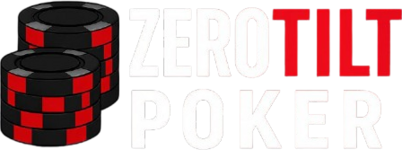
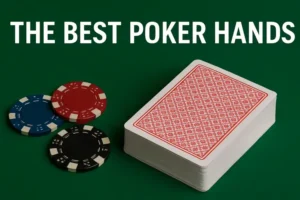
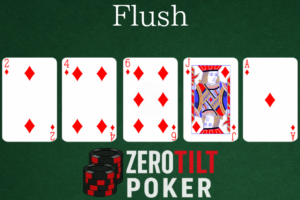
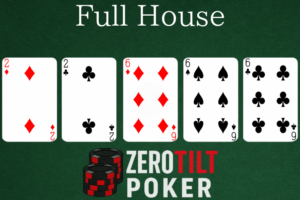
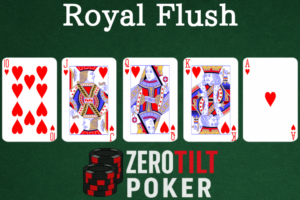
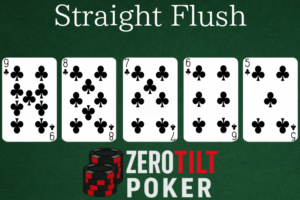
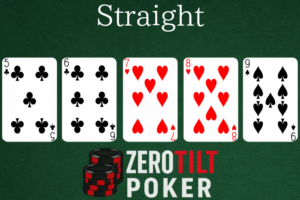
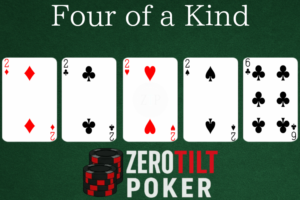
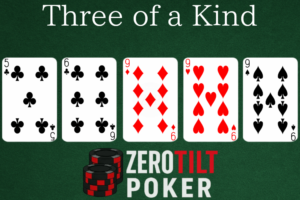
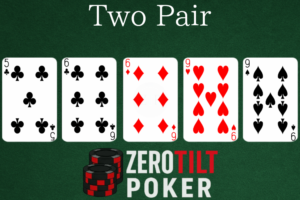



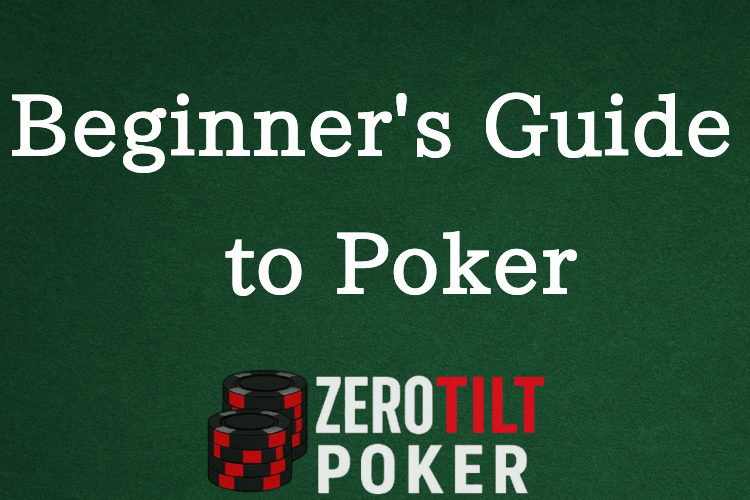

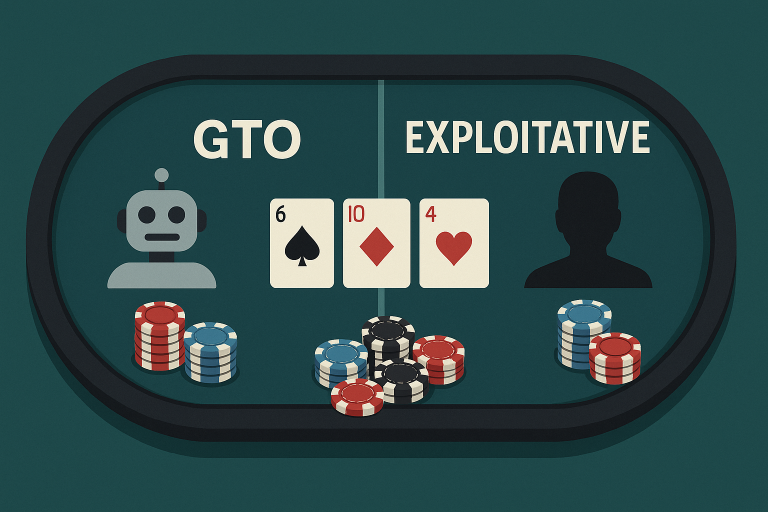

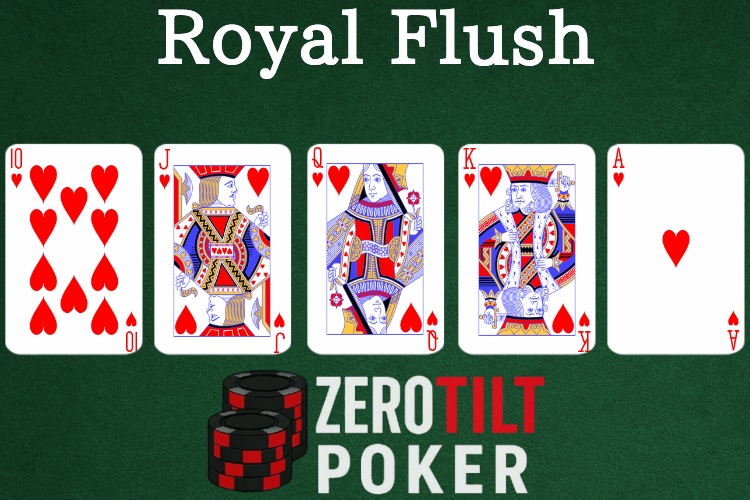
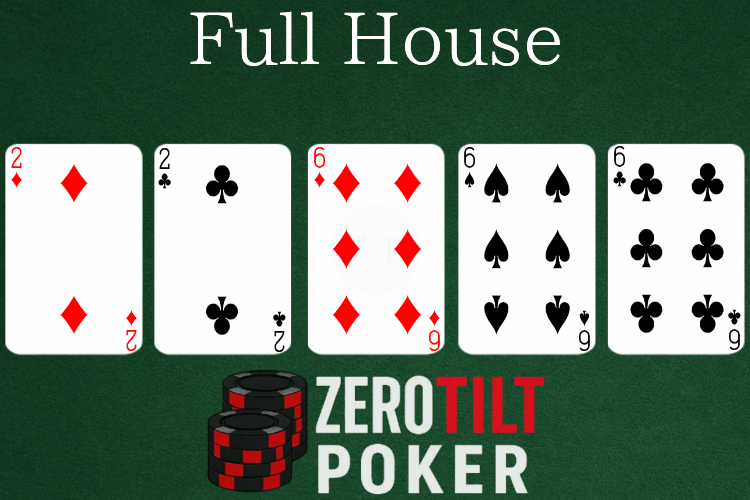
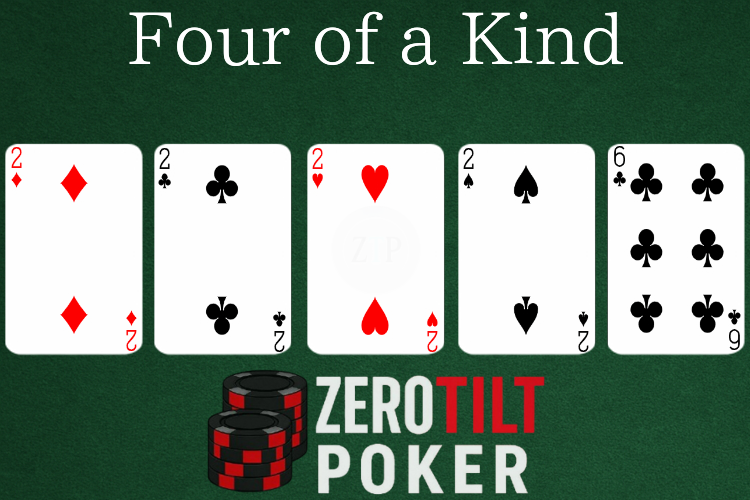
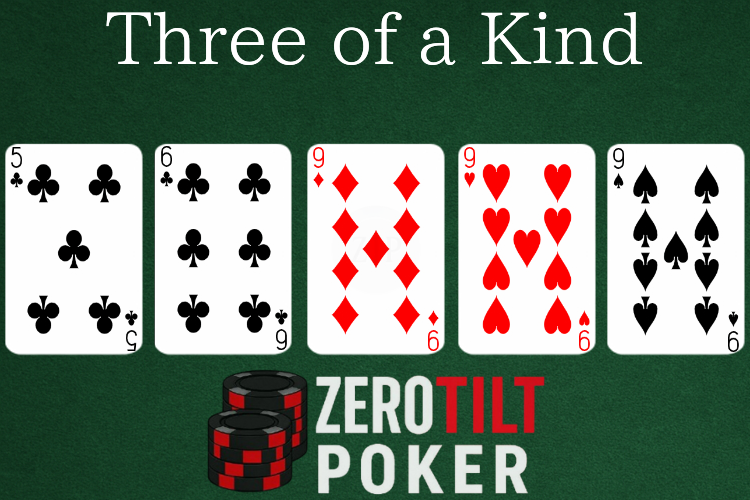
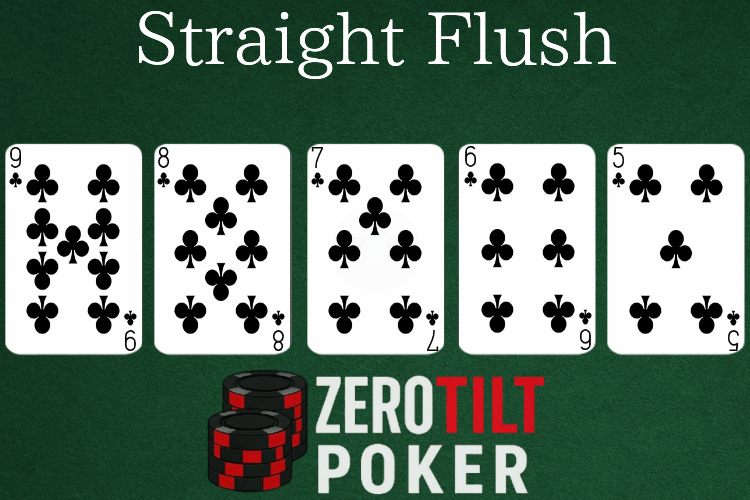
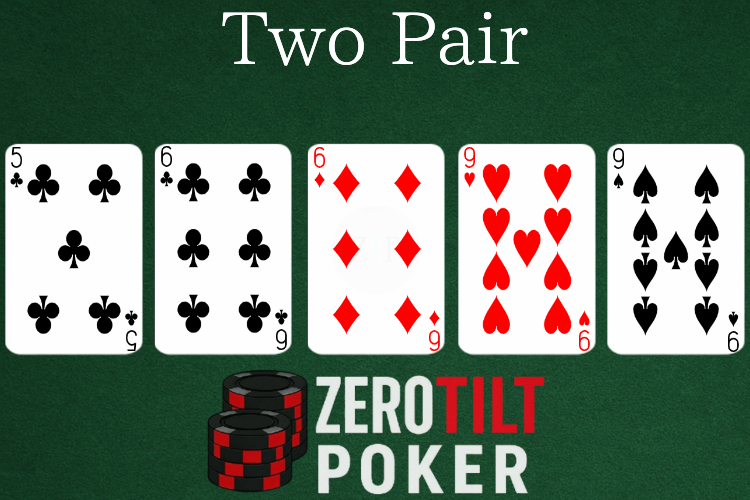
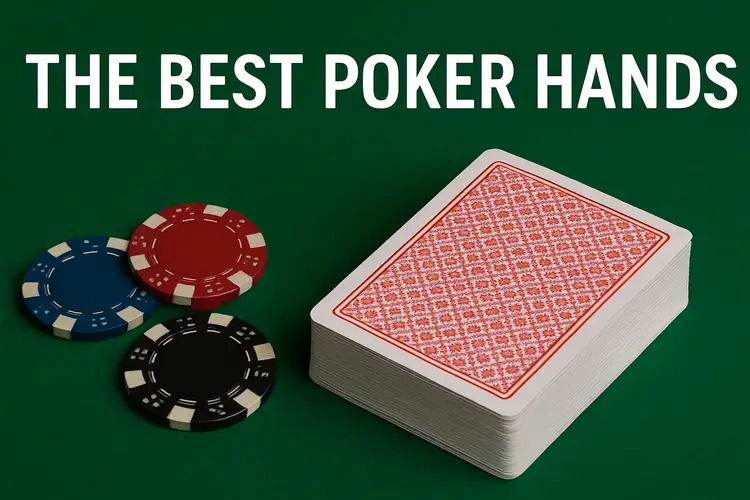

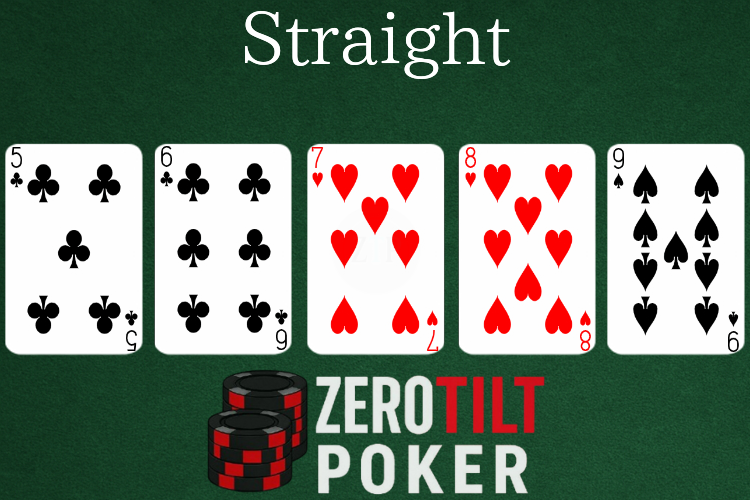

Leave a Reply